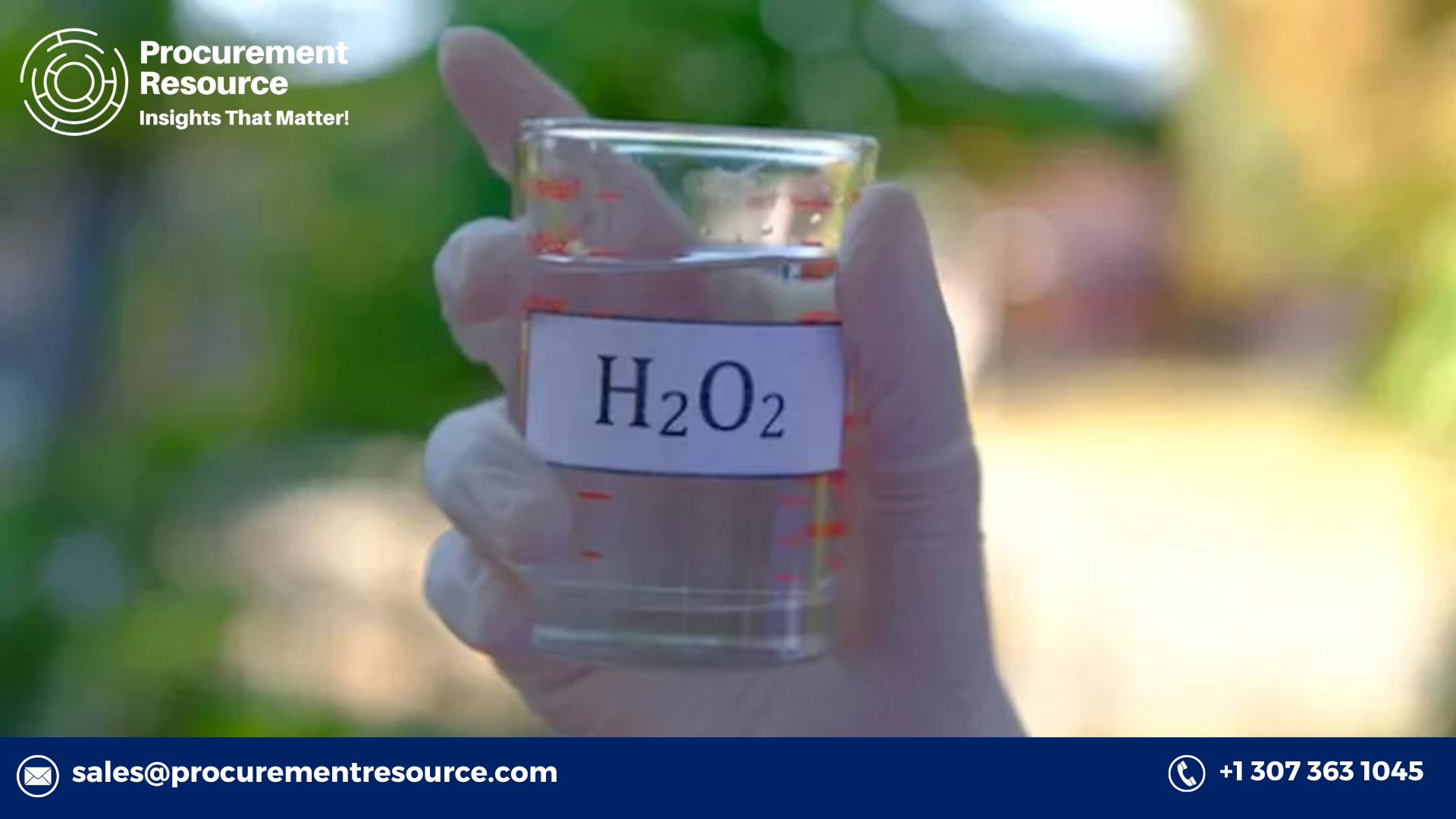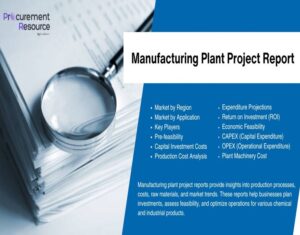
Hydrogen peroxide (H₂O₂) is a versatile chemical with numerous applications across various industries, including pharmaceuticals, textiles, paper and pulp, electronics, and wastewater treatment. Known for its oxidizing properties, hydrogen peroxide is used as a bleaching agent, disinfectant, and antiseptic. This report delves into the production process of hydrogen peroxide, highlighting the manufacturing techniques, raw material costs, and the latest industry news to provide a comprehensive understanding of its market dynamics.
Manufacturing Report and Process
Hydrogen peroxide is primarily produced through the anthraquinone process, which is the most efficient and widely adopted method in the industry. This process involves several key steps:
- Hydrogenation: The process begins with the hydrogenation of anthraquinone. In this step, anthraquinone is dissolved in a working solution and hydrogen gas is bubbled through it in the presence of a palladium catalyst. This reaction converts anthraquinone to anthrahydroquinone.
- Oxidation: The hydrogenated solution is then exposed to oxygen (usually from air), which oxidizes the anthrahydroquinone back to anthraquinone, producing hydrogen peroxide in the process.
- Extraction: The hydrogen peroxide formed is extracted from the working solution using water. The organic phase containing the anthraquinone is separated and recycled back into the hydrogenation step, ensuring a continuous process.
- Purification: The aqueous hydrogen peroxide solution obtained from the extraction step is then purified. This involves removing impurities and concentrating the solution to the desired strength. Purification techniques include distillation and ion exchange.
- Stabilization: Finally, stabilizers are added to the purified hydrogen peroxide to prevent decomposition during storage and transportation. Common stabilizers include phosphoric acid, sodium stannate, and acetanilide.
The anthraquinone process is highly efficient, with yields typically exceeding 95%. Additionally, the continuous recycling of the anthraquinone and the use of modern purification techniques contribute to the overall sustainability and cost-effectiveness of the process.
Request For Sample: https://www.procurementresource.com/production-cost-report-store/hydrogen-peroxide/request-sample
Raw Material Costs
The cost of raw materials is a critical factor in the production of hydrogen peroxide. The primary raw materials used in the anthraquinone process include hydrogen, oxygen, and anthraquinone. Here is a breakdown of their costs:
- Hydrogen: Hydrogen is typically produced through steam methane reforming (SMR) or water electrolysis. The cost of hydrogen varies depending on the production method and market conditions. On average, hydrogen costs range from $1 to $5 per kilogram.
- Oxygen: Oxygen is usually obtained from air separation units (ASUs) through cryogenic distillation. The cost of oxygen is relatively low, typically around $0.02 to $0.05 per cubic meter.
- Anthraquinone: Anthraquinone is a key organic compound used in the hydrogen peroxide production process. It is derived from coal tar or produced synthetically. The cost of anthraquinone can fluctuate based on market demand and the price of raw materials used in its production. Generally, the cost of anthraquinone ranges from $5 to $10 per kilogram.
Other costs associated with the production of hydrogen peroxide include utilities (such as electricity and water), catalysts, and stabilizers. Energy consumption is a significant component of the overall production cost, as the anthraquinone process involves multiple energy-intensive steps. However, advancements in technology and process optimization have led to improvements in energy efficiency, reducing production costs.
Latest News
The hydrogen peroxide industry is continuously evolving, driven by advancements in technology, changing market demands, and regulatory developments. Here are some of the latest news and trends in the hydrogen peroxide industry:
- Sustainability Initiatives: With growing emphasis on sustainability and environmental responsibility, many hydrogen peroxide manufacturers are investing in greener production methods. This includes the use of renewable energy sources, such as solar and wind power, to reduce carbon emissions associated with hydrogen production.
- Market Expansion: The demand for hydrogen peroxide is expanding across various sectors, including healthcare, electronics, and agriculture. In the healthcare sector, hydrogen peroxide is used as a disinfectant and antiseptic, particularly in response to the COVID-19 pandemic. In the electronics industry, it is used in the production of semiconductors and printed circuit boards. Additionally, hydrogen peroxide is being explored as a potential eco-friendly pesticide in agriculture.
- Technological Advancements: Innovations in hydrogen peroxide production technology are driving efficiency and cost reductions. For example, researchers are exploring alternative production methods, such as direct synthesis from hydrogen and oxygen using catalytic processes. These advancements have the potential to streamline production, reduce raw material costs, and enhance overall sustainability.
- Regulatory Changes: The regulatory landscape for hydrogen peroxide is evolving, with stricter safety and environmental regulations being implemented worldwide. Manufacturers are required to comply with stringent standards for handling, storage, and transportation of hydrogen peroxide. Additionally, there is increasing focus on reducing the environmental impact of production processes, leading to the adoption of cleaner technologies and practices.
- Mergers and Acquisitions: The hydrogen peroxide industry is witnessing consolidation through mergers and acquisitions. Leading chemical companies are acquiring or forming strategic partnerships with hydrogen peroxide manufacturers to strengthen their market position and expand their product portfolios. These mergers and acquisitions enable companies to leverage synergies, enhance operational efficiencies, and access new markets.
In conclusion, the production of hydrogen peroxide is a complex yet efficient process, primarily based on the anthraquinone method. The cost of raw materials, particularly hydrogen, oxygen, and anthraquinone, plays a significant role in determining production costs. The industry is experiencing dynamic changes, driven by sustainability initiatives, market expansion, technological advancements, regulatory developments, and consolidation activities. As the demand for hydrogen peroxide continues to grow, manufacturers are likely to focus on improving production efficiency, reducing costs, and adopting environmentally friendly practices to meet evolving market needs.






